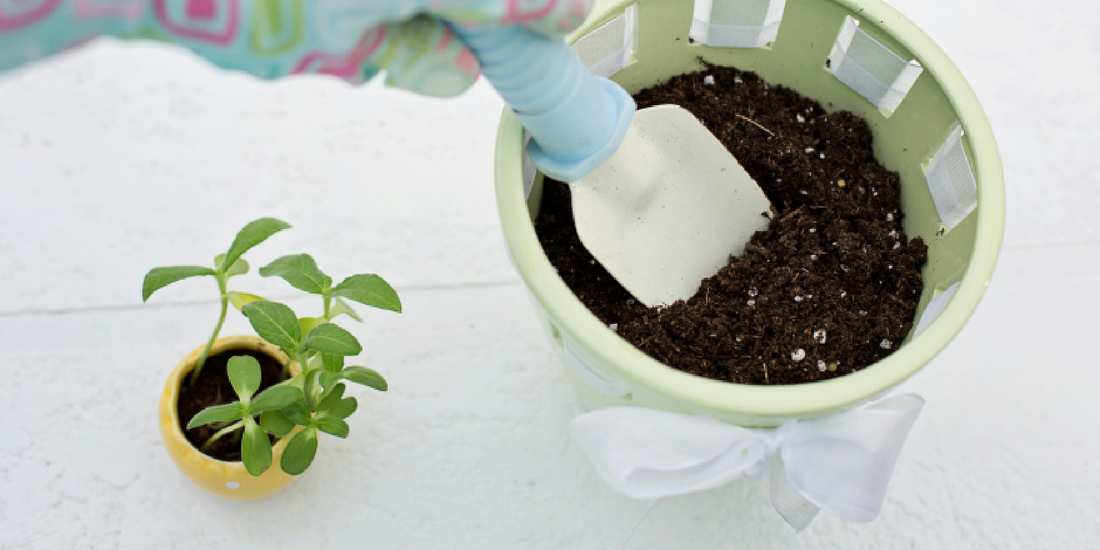
Can You Grow Tomatoes Indoors with LED Light?
Share
Tomatoes are a beloved staple in global cuisine, celebrated for their rich flavor, nutritional value, and versatility. But can they truly be grown indoors under artificial light? With modern LED grow lights, the answer is a resounding yes. In fact, indoor tomato cultivation is rapidly becoming a popular practice for urban gardeners who want fresh produce year-round, even without a traditional outdoor garden.
This guide explores everything you need to know about growing tomatoes indoors with LED lights—from the science of photosynthesis to practical setup advice, troubleshooting, and how solutions like the amoyls VerdantGlow S-Shaped 8-Tier Plant Shelf with Grow Lights can transform your living space into a mini indoor farm.
Why Consider Growing Tomatoes Indoors?
Indoor tomato growing is not just a novelty—it’s an effective way to take control over your food supply. The benefits include:
- Fresh harvests all year – Forget seasonal limitations; enjoy ripe tomatoes even in the depths of winter.
- Reduced exposure to pests – Indoors, tomatoes are less prone to outdoor insects, blight, and soil-borne diseases.
- Space efficiency – Apartment dwellers can still enjoy gardening without a backyard.
- Complete control – You can adjust light, water, and temperature to meet the plant’s exact needs.
- Sustainable practice – By growing food at home, you reduce reliance on long supply chains.
With the right setup, even a small corner of your living room can become a thriving tomato garden.
Do Tomatoes Really Need LED Grow Lights Indoors?
Tomatoes are sun-loving plants that demand a minimum of 8–12 hours of strong light daily, and up to 16–18 hours during flowering and fruiting. In most indoor environments, natural sunlight is insufficient, especially in winter or shaded urban apartments. LED grow lights bridge this gap by mimicking natural sunlight in a precise, controlled way.
Why LED Lights Work Best for Tomatoes
- Full-spectrum coverage – Provides both blue and red wavelengths essential for growth.
- Energy-efficient – Consumes less power than older HPS or fluorescent lamps.
- Cool operation – LEDs emit little heat, preventing leaf burn.
- Durability – Many LEDs last 50,000+ hours, offering long-term reliability.
When chosen correctly, LED lights don’t just keep tomatoes alive—they allow them to flourish.
Understanding Tomato Light Requirements
Light is the most critical factor for indoor tomato success.
- Seedling stage (blue light dominant): Encourages strong root and leaf growth.
- Vegetative stage (balanced blue and red): Supports stem thickening and foliage.
- Flowering and fruiting (red light dominant): Red wavelengths stimulate flower and fruit production.
Without adequate light, tomatoes will grow leggy, produce fewer flowers, and yield poor fruit.
Choosing the Right LED Grow Light
Not all LEDs are equal. Key considerations include:
- Spectrum – Choose full-spectrum LEDs that replicate sunlight. Avoid single-color lights that limit plant development.
- Intensity – Tomatoes require 30–40 watts per square foot. Ensure the coverage area matches your plant’s needs.
- Adjustability – As tomato plants grow taller, adjustable lights or shelves help maintain correct distance.
- Automation – Timers make it easy to maintain consistent day/night cycles.
- Compatibility with shelving – Lights that integrate with shelving, such as those on the VerdantGlow 8-Tier Plant Shelf, make setup seamless.
Setting Up Your Indoor Tomato Garden
A successful indoor tomato setup combines proper lighting, space management, and environmental controls.
1. Selecting the Right Tomato Variety
Not all tomatoes are equal indoors. Smaller, compact varieties perform best:
- Cherry tomatoes (Tiny Tim, Red Robin, Balconi) – Perfect for containers.
- Dwarf or determinate varieties – Grow shorter and require less staking.
- Bush vs. vine types – Bush types are easier for beginners, while vining varieties require more space and support.
2. Containers and Soil
- Use containers of at least 5 gallons to support root systems.
- Choose well-draining potting soil enriched with compost or perlite.
- Ensure containers have drainage holes to prevent root rot.
3. Watering Techniques
Tomatoes dislike inconsistent watering.
- Keep soil moist but not soggy.
- Water deeply, allowing roots to establish.
- Use self-watering pots for consistency.
4. Temperature and Humidity
Tomatoes thrive at:
- 70–80°F (21–27°C) daytime
- 60–65°F (15–18°C) nighttime
- Humidity around 40–70%
A small humidifier or dehumidifier can help maintain balance indoors.
Fertilizing Indoor Tomatoes
Since nutrients in containers deplete faster than in garden soil, regular fertilization is key.
- Early growth: Balanced fertilizer (10-10-10 NPK).
- Pre-flowering: More phosphorus (5-10-5) to encourage blooms.
- Fruit set: Higher potassium (5-10-15) to boost fruit development and sweetness.
Organic alternatives include compost tea, worm castings, and fish emulsion, which provide slow-release nutrients.
Supporting Indoor Tomato Plants
Tomatoes, even compact ones, need support. Indoors, this often means:
- Using stakes or trellises within containers.
- Training vines gently with plant clips.
- Pruning side shoots to focus energy on fruit.
The VerdantGlow Plant Shelf helps by providing vertical support options across tiers.
The Pollination Challenge Indoors
Outdoors, wind and insects ensure tomato pollination. Indoors, you need to assist.
Pollination methods:
- Shake stems lightly to release pollen.
- Use a soft brush or cotton swab to transfer pollen between flowers.
- Place a small fan nearby to mimic wind.
Without pollination, flowers will drop, and fruits won’t form.
Common Problems and How to Fix Them
- Leggy growth – Move lights closer or increase intensity.
- Yellowing leaves – Could indicate overwatering or nitrogen deficiency.
- No fruiting despite flowers – Improve pollination and red light exposure.
- Blossom end rot – Caused by calcium deficiency or uneven watering.
- Powdery mildew indoors – Increase airflow and reduce humidity.
Monitoring plants regularly allows you to act before small issues become major setbacks.
How VerdantGlow 8-Tier Plant Shelf Enhances Indoor Growing
The amoyls VerdantGlow S-Shaped 8-Tier Plant Shelf with Grow Lights is more than furniture—it’s a practical gardening solution.
- Built-in full-spectrum LED lights – No need to buy separate fixtures.
- 8 tiers of space – Grow multiple tomato plants or mix with herbs and greens.
- Adjustable design – Supports the vertical growth of tomato vines.
- Aesthetic appeal – A modern, minimalist look that fits into living rooms, kitchens, or offices.
- Energy-efficient system – Optimized lighting without high electricity bills.
It allows growers to integrate gardening into their lifestyle without compromising space or design.
Real-Life Example: Growing Cherry Tomatoes Indoors
Here’s a practical schedule for cultivating cherry tomatoes indoors:
- Weeks 1–2: Start seeds under LED lights (12 hours/day).
- Weeks 3–4: Transplant seedlings into 5-gallon containers on the VerdantGlow shelf.
- Weeks 5–6: Increase light exposure to 14 hours/day; begin light fertilization.
- Weeks 7–8: Support plants with stakes; start hand-pollination as flowers appear.
- Weeks 9–12: Fruits begin forming; adjust nutrients to higher potassium.
- Weeks 12+: Harvest ripe cherry tomatoes directly from your indoor shelf.
This process ensures a continuous supply of fresh tomatoes, even in mid-winter.
Beyond Tomatoes: Other Crops You Can Grow
The VerdantGlow shelf isn’t limited to tomatoes. You can also grow:
- Peppers – Thrive under similar light conditions.
- Strawberries – Produce sweet fruits indoors with proper lighting.
- Herbs – Basil, thyme, oregano, and mint flourish under LEDs.
- Leafy greens – Spinach, kale, and lettuce grow quickly in smaller tiers.
This versatility turns the shelf into a year-round indoor farm.
Final Thoughts
So, can you grow tomatoes indoors with LED light? Absolutely. With careful planning, the right variety, and consistent light, water, and nutrients, your indoor garden can rival outdoor harvests. Tools like the amoyls VerdantGlow S-Shaped 8-Tier Plant Shelf with Grow Lights make it easier by integrating lighting, design, and space efficiency into one solution.
Indoor tomato gardening is not only feasible—it’s rewarding, sustainable, and delicious. Whether you’re an urban dweller or simply curious about indoor gardening, the combination of LED technology and smart shelving solutions brings the joy of fresh tomatoes to your home all year long.
